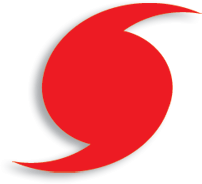History - Part 3
In 1826 Samuel Morey experimented with an internal combustion chemical mixture that used ethanol as fuel. His discovery was overlooked due to the success of steam power and received little attention until 1860. A popular fuel in the U.S. before petroleum was a blend of alcohol and turpentine called "camphene", also known as "burning fluid". The discovery of a ready supply of oil in Pennsylvania and taxation of burning fluid made kerosene a more popular fuel.
In 1896, Henry Ford designed his first car, the "Quadricycle" to run on pure ethanol. In 1908 the Ford Model T was capable of running on gasoline, ethanol or a combination. Ford continued to advocate for ethanol fuel even during prohibition, but lower prices caused gasoline to prevail.
Gasoline containing up to 10% ethanol began a decades-long growth in the United States in the late 1970s. The steep growth in 21st century ethanol consumption was driven by federal legislation aimed to reduce oil consumption and enhance energy security.
Reference
Ethanol Fuel in the United States From Wikipedia



 May 24th - 30th is 2015 National Hurricane Preparedness Week. This along with the government's Resolve To Be Ready Campaign, #Ready2015, encourages us to prepare for severe weather and natural disasters, particularly in the mid-west, and states bordering the gulf and east coasts. With the official start of hurricane season quickly approaching on June 1st and lasting all the way through November 30th, now is the time to take inventory of your disaster plan and provisions. How quickly you can recover from a disaster depends on how well you have planned and prepared for one.
May 24th - 30th is 2015 National Hurricane Preparedness Week. This along with the government's Resolve To Be Ready Campaign, #Ready2015, encourages us to prepare for severe weather and natural disasters, particularly in the mid-west, and states bordering the gulf and east coasts. With the official start of hurricane season quickly approaching on June 1st and lasting all the way through November 30th, now is the time to take inventory of your disaster plan and provisions. How quickly you can recover from a disaster depends on how well you have planned and prepared for one.